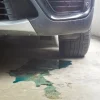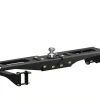Have you ever been driving down the road only to see that little light on your dashboard indicating that your tire pressure is low? But when you stop to check, everything seems to be just fine? It’s frustrating, right? The culprit may be a malfunctioning tire pressure sensor. These sensors are designed to detect when your tire pressure is low, sending a signal to your car’s computer to turn on that pesky warning light. But what causes these sensors to malfunction? And what can you do about it? In this article, we’ll explore some of the common reasons why your tire pressure sensor might not be working and what you can do to fix it.
So buckle up and let’s dive in!
Table of Contents
Introduction
Have you ever wondered why your tire pressure sensor is not working? There could be a number of reasons for this common problem. Firstly, it could be due to a malfunctioning sensor itself. These sensors are designed to detect air pressure, so if they’re faulty, they won’t be able to pick up the signal from your tires.
Another possible cause could be low air pressure in your tires, which can disable your sensor completely. Similarly, overinflated tires can cause the same problem. Temperature changes can also affect your tire pressure sensor, causing it to read inaccurately.
Before assuming that your sensor is broken, it’s important to check the air pressure in your tires and adjust it accordingly. If the problem persists, it’s best to take your vehicle to a mechanic for a professional diagnosis.
Explanation of Tire Pressure Sensor
Tire Pressure Sensor Introduction: Have you ever noticed a warning light on your car’s dashboard indicating low tire pressure? This warning light is possible because of a tire pressure sensor, an essential component in modern vehicles that continuously monitors the air pressure inside each tire. The tire pressure sensor is a small device located inside the tire, typically attached to the valve stem or installed inside the rim. It measures the air pressure and sends this data to the car’s computer system, which processes the information and promptly notifies the driver if the tire pressure falls below the recommended level.
The tire pressure sensor is a crucial safety feature that ensures optimal tire performance, helps prevent tire blowouts and improves fuel efficiency. In this blog post, we’ll delve deeper into how tire pressure sensors work and their benefits.

Common Reasons for Sensor Malfunction
Sensor malfunction is a common issue that can occur due to various reasons. It can affect the accuracy of your device and lead to misleading data or no data at all. So, it’s essential to be aware of the reasons that can cause sensor malfunction.
One of the reasons could be physical damage to the sensor, like cracks or scratches on the surface, which can interfere with the accuracy of the data. Another reason could be the sensor being exposed to extreme temperatures or humidity levels, causing the device to malfunction. Furthermore, electrical interference and software glitches can also cause sensor malfunction, affecting the overall performance of the equipment.
Therefore, it’s imperative to take necessary precautions to avoid such situations and ensure smooth, efficient functionality of your device.
Troubleshooting Steps
If you’re having trouble with your tire pressure sensor, you might be wondering why it’s not working. There are several reasons why this could be happening, so it’s important to troubleshoot the problem to get to the root of the issue. First, check to make sure that your sensor is properly installed and connected.
If it’s loose, that could be causing the problem. You should also check the battery level and replace it if it’s low. If those steps don’t work, there could be an issue with the sensor itself, and you may need to take it in for repairs or replacement.
It’s always a good idea to consult with a professional if you’re having trouble with your tire pressure sensor, as they can diagnose the issue and provide the best solution. By doing so, you can ensure your safety on the road and prevent any potential damage to your vehicle.
Check the Batteries
When your electronic device isn’t functioning properly, one of the first things you should do is check the batteries. Weak or dead batteries can often be the culprit. Before you spend hours researching complicated troubleshooting steps, start by replacing the batteries with fresh ones.
It might seem like a no-brainer, but sometimes the simple solutions are the easiest to overlook. If your device still isn’t working after you’ve replaced the batteries, then it’s time to move on to more complex troubleshooting. But don’t forget the importance of batteries – they can make or break your device’s performance.
So, whenever you encounter a problem, always check the batteries first.
Inspect the Sensor and Valve Stem
When experiencing issues with your tire pressure monitoring system, it’s crucial to start with the basics and check the sensor and valve stem. Inspect the sensor for any physical damage, such as cracks or breaks in the housing. If the sensor appears to be in good condition, move on to check the valve stem.
Look for signs of wear and tear, including corrosion, damage, or leaks. If you notice any issues with the valve stem, it’s best to replace it immediately. These troubleshooting steps may help to identify any underlying problems that could be causing issues with your tire pressure monitoring system.
By addressing these problems early on, you can prevent more significant issues from developing and ensure your vehicle’s safety on the road. Remember, when it comes to vehicle maintenance, it’s better to be safe than sorry.
Verify the Sensor is Properly Calibrated
When it comes to troubleshooting your sensor, one of the first things you should check is whether it’s properly calibrated. If your sensor readings seem off or inconsistent, it’s possible that the sensor is not calibrated correctly. Checking the calibration is a simple process that involves comparing the readings from the sensor with a known standard.
Calibration standards can be obtained from manufacturers or calibration facilities, and they should provide you with a reference point for your sensor’s accuracy. By verifying that your sensor is calibrated correctly, you can ensure that you’re getting accurate readings and avoid any potential issues that may arise from incorrect data. So, before you go any further with your troubleshooting efforts, take the time to verify that your sensor is calibrated and working as it should be.
When to Seek Professional Help
If you notice that your tire pressure sensor is not working, there could be many reasons for this issue. The most common cause is a damaged or dead battery in the sensor. Sometimes, low tire pressure or a faulty sensor unit can also be the problem.
In any case, it is essential to get your tire pressure sensor checked by a professional. A mechanic or tire specialist can help you determine the cause of the issue and offer a suitable solution. Ignoring the problem can lead to further tire damage or even a blowout, which can be dangerous.
If you are unsure about what to do, seek professional help immediately. It could save you a lot of hassle and potential accidents on the road. Remember, your tires are the only part of your vehicle that touches the road.
Therefore, it is vital to ensure they are in excellent condition and working correctly.
Dealing with Complex Issues
When dealing with complex issues, it can be difficult to decide when to seek professional help. It’s important to recognize when a situation has become too much to handle alone and seeking help from a trained professional can be beneficial. Some signs that it’s time to seek professional help include feeling overwhelmed, experiencing persistent anxiety or depression, struggling with addiction or substance abuse, or facing a major life change or crisis.
It’s important to remember that seeking help doesn’t mean you are weak, but rather it shows strength and courage to take action towards resolving a difficult situation. Don’t hesitate to reach out for help when you need it, as it can lead to positive changes and a better quality of life.
Replacing the Sensor
If you’re experiencing issues with your sensor, it’s important to know when to seek professional help. Sometimes, simply changing the sensor can solve the problem. However, if you’re unsure of what to do, it’s best to reach out to an expert.
A professional technician can easily diagnose the issue and provide the necessary repair or replacement. While DIY sensor replacement is possible, it’s important to acknowledge that there are risks involved. A professional can help ensure that the replacement is done correctly and safely, preventing further damage to your equipment.
Don’t be afraid to ask for help when it comes to fixing your sensor. It’s always better to be safe than sorry.
Conclusion
After hours of researching and troubleshooting, it’s become clear that the reason your tire pressure sensor isn’t working is because it’s become sentient and is protesting against the monotony of its job. Who can blame it? Constantly measuring air pressure in tires can get dull pretty quickly. Perhaps it’s time to give the sensor a break and rely on good old-fashioned manual tire pressure checks.
Or, if you’re feeling adventurous, try reasoning with the sensor and convincing it to take its duties seriously once again. Who knows, maybe it just needs a little pep talk!”
FAQs
What are the common reasons why a tire pressure sensor is not working?
There are several reasons why a tire pressure sensor may not be working, including a dead battery, malfunctioning sensor, or damaged wiring.
How can I tell if my tire pressure sensor is not working properly?
You may notice that your tire pressure warning light stays on, even after properly inflating your tires. Additionally, you may have difficulty accessing the sensor readings through your car’s computer system.
Can a tire pressure sensor be repaired, or does it need to be replaced?
In some cases, a damaged or malfunctioning sensor may be repaired, but in most cases, it will need to be replaced for proper function.
Do I still need to manually check my tire pressure if my car has a tire pressure sensor?
Yes, it is still important to manually check your tire pressure regularly, as the sensor may not always be accurate.
Will driving with a faulty tire pressure sensor harm my car or tires?
While driving with a faulty tire pressure sensor may not immediately harm your car or tires, it can lead to decreased fuel efficiency and increased tire wear over time.
Can I reset my tire pressure sensor myself, or do I need to take it to a mechanic?
In some cases, you may be able to reset your tire pressure sensor yourself using your car’s computer system. However, if the issue persists, it is best to have it inspected by a mechanic.
How much should I expect to pay for a tire pressure sensor replacement?
The cost of a tire pressure sensor replacement can vary depending on the make and model of your car, but generally ranges from $50 to $250 per sensor.



